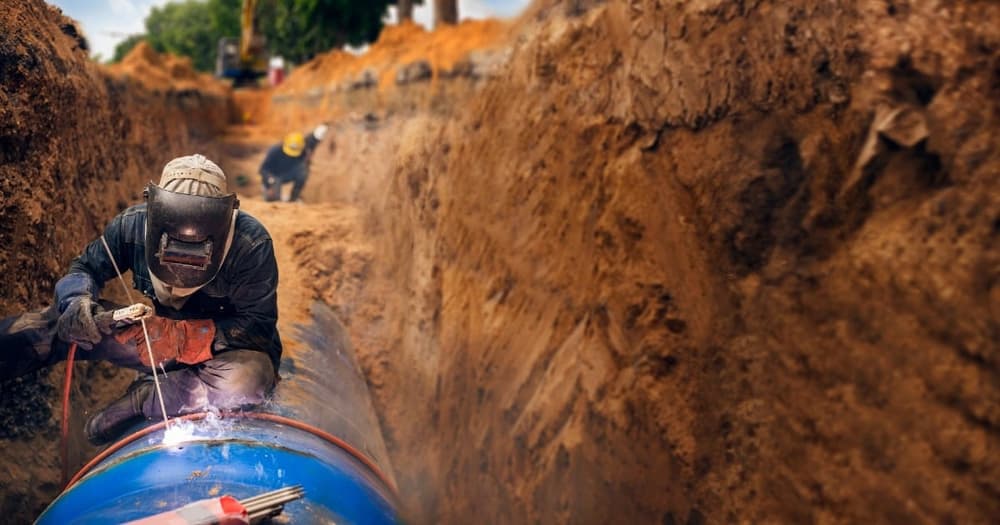The stringent health and safety measures implemented in the oilfield industry are not simply there for show.
This can be a dangerous industry and serious accidents can occur when protocols are not carefully followed.
To give you an idea of how you could get injured while working in the oilfield, here are 8 common oilfield accidents and how you can avoid them:
1. Equipment Failures
Drilling sites use large and potentially dangerous pieces of heavy equipment for drilling, pulling pipe and many other jobs required of the worksite.
When this equipment is not working properly, it can lead to serious injury and even death.
Heavy machinery must be well-maintained and workers need to have adequate training for operations and safety of heavy equipment.
2. Explosions and Fires
The oil and gas contained within tanks, trucks and wells is highly flammable and can easily be ignited by flame, static electricity and other heated elements.
The resulting fire and explosion can be especially dangerous since they can spread quickly and injure more people.
Explosions and fires can be prevented by following OSHA (The Occupational Safety and Health Administration) requirements and guidelines when it comes to regular inspections of drilling sites.
3. Blowouts
Well blowouts occur when there is an uncontrolled release of oil during the drilling process. These are typically caused by faulty machinery, specifically when it comes to the pressure control systems.
While not entirely dangerous on their own, well blowouts can become dangerous oil fires if they are ignited.
Well blowouts can be avoided by knowing the warning signs of a “kick” (when water, gas or oil enters the wellbore during drilling) and ensuring the BOPs (blowout preventers) are in good shape.
4. Hazardous Chemicals and Fumes
The oilfield industry deals with many toxic and dangerous chemicals including Nitrogen Oxide, Benzene and Sulfar Dioxide.
Benzene in particular has been linked to leukemia and certain types of cancers due to it decreasing white cell production. Sulpher Dioxide, on the other hand, can cause heart attacks and lung cancer.
While oilfield workers are exposed to these substances, many health and safety protocols have been put into place requiring proper PPE (Personal Protective Equipment).
5. Falling Objects
Oil rig workers are at risk of getting hit by falling or moving objects. These may include tongs, pipes, spinning chains and even failed high-pressure hose connections.
Equipment and machinery are always being moved overhead, so harnesses, netting and other barriers are used to keep objects and equipment from falling.
Otherwise, improperly secured equipment and machinery can fail and seriously injure oil rig workers.
6. Electrocution
Because drilling rigs use salt water and other corrosive chemicals during the extraction process, simple things such as faulty or worn wiring on a lightbulb can cause electrical shock.
This is why it’s important to wear electrical insulators to protect against electrocution as well as ensure worn or damaged equipment is immediately replaced.
7. Slips and Falls
Poorly maintained worksites and workspaces can lead to unnecessary slips, trips and falls. These accidents may not cause serious injury but some may and the fact that they happen is completely avoidable.
Many workers in the oilfield work long hours and sleep deprivation can affect physical coordination and lead to tripping.
Take the initiative to ensure pathways are clear but also be mindful of your environment when moving around the oil rig.
8. Motor Vehicle Accidents
The leading cause of fatalities in the oil and gas industry is, surprisingly, motor vehicle accidents. In fact, vehicular accidents make up more than 40% of work-related deaths in this industry.
This makes sense, however, when you think about the number of oil rig works commuting to and from hard-to-access work sites as well as the number of truckers transporting goods around the nation.
Again, paying attention to your surrounding while operating a motor vehicle is important in avoiding accidents. Also, if you are driving commercial oil and gas vehicles, be sure to have a CDL (Commercial Driver’s License).
Common Oilfield Injuries
Now that you know what the most common accidents in the oilfield are, let’s look at the types of injuries many oilfield workers sustain:
- Back and Neck Injuries. With the amount of heavy lifting workers are required to do, back and neck injuries are very common. Proper lifting techniques should be used to avoid these injuries.
- Burns. Between fires, explosions and the use of hazardous materials, first-degree, second-degree and third-degree burns can all occur in the oilfields.
- Soft Tissue Injuries. Soft tissue injuries include injuries such as tearing a muscle or tendon. Repetitive movements can result in soft tissue damage, which can result from mild to severe.
Prevention is the first step in avoiding accidents and injuries. Ensure that your workplace is up-to-date with safety training and never hesitate to report any issues you come across that could lead to a serious accident!

